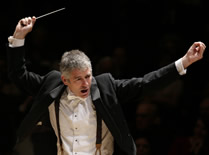The second program of Asheville-based Keowee Chamber Music concerts features the unusual instrumental combination of flute, viola and harp, heard first here at the chapel of the First Presbyterian Church. On June 19th the program will repeat at First United Methodist Church, Waynesville, and again on June 21st, at Pretty Place Chapel at the YMCA Camp Greenville. Featured musicians are Kate Steinbeck, flute/artistic director, Jacquelyn Bartlett, harp, and Simon Értz, viola. Joining them for the concert’s final piece are Corine Brouwer, violin, Philip von Maltzahn, cello, and Keowee Chamber co-founder Elizabeth Austin, cello.
In its ninth festival, Keowee’s mission to “present world-class music accessible to all” has taken it in interesting directions, including a separate series for the young, “Keowee for Kids!” The exploration of eclectic and musically challenging repertoire performed by stellar artists is what one comes to expect from their concerts. Two perform on custom instruments. Steinbeck performs on a modern wooden flute created by her husband, Chris Abell. Hearing her play is a revelation in what range of beautiful tones are possible on the instrument. Violist Értz performs on an instrument built by his brother, Neil.
The program opened with Sir Arnold Bax’s “Elegiac Trio,” for flute, viola and harp. Composed in 1916 in response to the Easter uprisings in Ireland, events that deeply affected the composer, the work is suffused with romantic melody and timbers of transcendent beauty. Because the music didn’t follow a predictable trajectory, it allowed this listener simply to revel in the beauty of the passing moments. The harp part, front and center, was the glue to the ensemble, deftly weaving its variegated figurations as both foreground and background materials. Bartlett is a marvelous player, and her technical command of this difficult instrument is so impressive. The ensemble was flawless, and the gradations of dynamics, sparing at the beginning, widened as the piece progressed.
Next was Debussy’s Sonata, for flute, viola and harp, composed in 1915. Debussy had planned to write a series of six sonatas for various instrumental combinations modeled after Baroque works, but due to ill health was able to complete only three, the Sonata for cello and piano that summer, the Sonata for flute, viola, and harp in October, and the Sonata for violin and piano in 1917. Acute distress about the World War and his mother’s death paralyzed his creativity for a period, traumas from which he only slowly recovered. The work begins with a movement marked “Pastorale Lento, dolce rubato,” a movement with several formal segments determined by melody, tempo, and mood. Wisps of melodies were traded seamlessly between flute and viola; an arresting slower section of drone-like double stops in the viola against the harp, and sections of changing meter, added to the interest of the piece. The second movement, “Interlude Tempo di minuetto,” is a vintage Debussian mix of old (minuet) and new (modal melodies, parallel chords, special instrumental effects, jazz inflections), and the playing here was exquisitely balanced and nuanced. The Finale, Allegro moderato ma risoluto, sounded the most “experimental” and difficult to coordinate with its snapped viola pizzicatos, ostinati, and collage of melodies unfolding at warp speed.
After intermission came Camille Saint-Saëns’ Romance, Op. 37, for flute and harp. Written in 1874 for piano and flute, the work was arranged for harp by Bartlett. Stylistically, this was the most conservative piece on the program, as Saint-Saëns’ fight against the more progressive Debussy and Ravel played out. The ensemble was beautifully coordinated and marvelously executed, the harp only occasionally overpowering the flute in the low register.
The final piece on the program was Albert Roussel’s three-movement Serenade, Op. 30, for flute, violin, viola, cello, and harp, from 1925. Steinbeck pointed out that Roussel had been a mariner before he turned to composing, and it was not a stretch to hear the sea in his works. He later taught Edgar Varèse, among other important musical figures of the 20th century. His style, characterized by Steinbeck as “quirky, bubbly and light” was charming in its inventive dissonance and collage of unexpected turns and twists. This expansive and joy-filled work was performed with relish and panache. For an encore, this same ensemble played Andrew Levin’s “Black Mountain Farewell,” a lovely, lyrical ballade.











